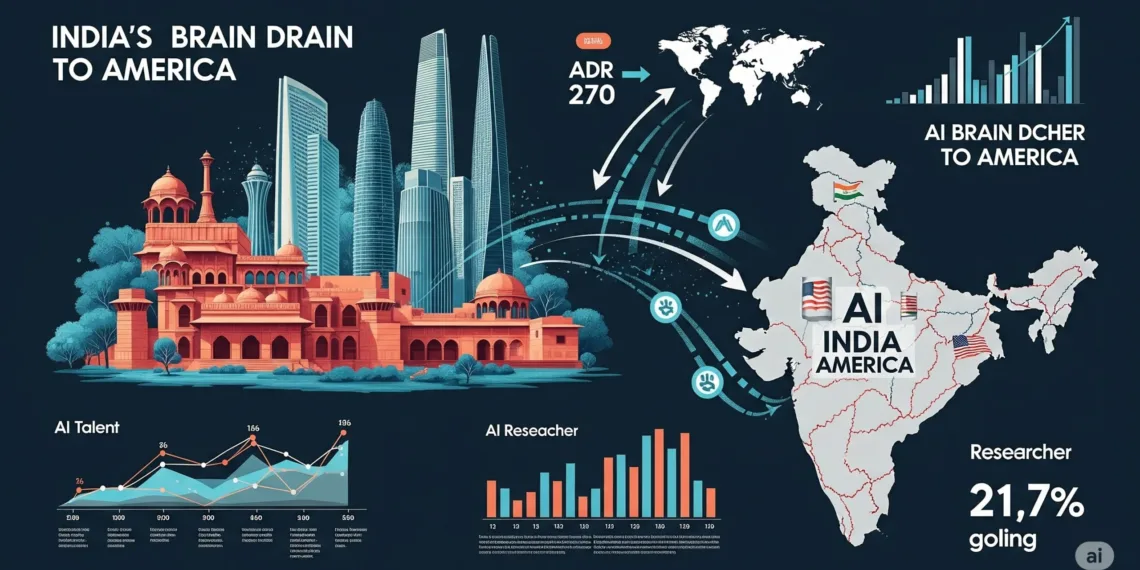New data reveals India sent 10x more AI professionals to US than any other country between 2019-2024 – reshaping global tech landscape
The numbers are staggering: India has emerged as the undisputed global supplier of AI talent to the United States, contributing over 10,000 top AI professionals between 2019 and 2024 – more than all other countries combined!
Table of Contents
The Massive Migration That’s Reshaping AI
According to Zeki’s Talent Atlas data analysis, India’s contribution to US AI workforce development dwarfs every other nation. Iran comes a distant second with approximately 1,000 professionals, followed by Canada and the United Kingdom with even smaller numbers.
Top Sources of AI Talent to the US (2019-2024)
| Rank | Country | Estimated AI Professionals | Market Share |
|---|---|---|---|
| 1st | India | ~10,000+ | ~70% |
| 2nd | Iran | ~1,000 | ~7% |
| 3rd | Canada | ~800 | ~5% |
| 4th | United Kingdom | ~700 | ~5% |
| 5th | Bangladesh | ~600 | ~4% |
Why India Dominates the AI Talent Exodus
Several factors drive this unprecedented migration:
- World-class technical education through IITs and engineering colleges
- English proficiency enabling seamless integration
- H-1B visa accessibility for skilled professionals
- Massive salary arbitrage (US salaries often 5-10x higher)
- Silicon Valley’s aggressive recruitment from Indian talent pools
The US Wins Big, India Faces Challenges
For America, this represents a massive competitive advantage. Indian AI professionals are powering innovation at Google, Microsoft, Meta, OpenAI, and countless startups. The talent influx helps maintain US leadership in AI development while other nations struggle with skill shortages.
For India, it’s a complex equation – brain drain versus brain circulation. While losing top talent hurts domestic AI development, many professionals eventually return with enhanced skills, capital, and global networks.
Global Implications of the AI Talent Race
The data reveals an interesting geopolitical pattern. Despite tensions, Iran ranks second, highlighting how AI talent transcends political boundaries. Traditional tech powers like Germany, France, and Japan appear surprisingly low, suggesting either stronger domestic retention or different migration patterns.
What This Means for the Future
As AI becomes the ultimate strategic technology, this talent migration gives the US a sustained competitive edge. However, India’s growing AI ecosystem – fueled by investments from OpenAI, Google, and Microsoft – may eventually slow this exodus.
The question isn’t whether India will continue leading AI talent exports, but whether other nations can develop comparable talent pipelines to compete in the global AI race.
Follow the latest AI talent trends and tech migration patterns on TechnoSports.








